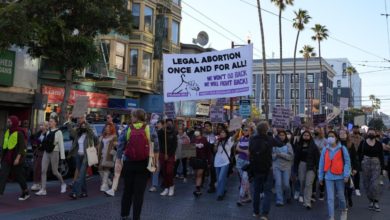August 2006 marks the tenth anniversary of the passage of the Personal Responsibility and Work Opportunity Reconciliation Act—more commonly, but incorrectly, called the “welfare reform” act. The act represented the partial success of a long-standing attack on social benefits won by workers’ struggles in the 1930s.
On Aug. 14, 1935, as part of the New Deal, Aid to Dependent Children was created by the Social Security Act to
|
The capitalist ruling class had long seen ADC, later changed to Aid to Families with Dependent Children, as an unacceptable policy of giving away money to potential workers without providing increased wealth for the bosses. After decades of attempts to roll back this social benefit, the U.S. government under the Clinton administration finally succeeded.
On Aug.22, 1996, Bill Clinton signed the Personal Responsibility and Work Opportunity Reconciliation Act into law. The very name of this law reflects its purpose—to shift responsibility for providing funds for fundamental social needs from the government to the individual. The law replaced AFDC with a program called Temporary Assistance to Needy Families, which requires aid recipients to work for at least 20 hours per week and places a maximum five-year lifetime limit on assistance.
Under the 1996 law, the federal government provides block grants to states, which then decide how to utilize the monies provided. Each state establishes its own rules—while meeting federal requirements and restrictions—regarding eligibility for welfare and ancillary safety-net programs like Medicaid, the State Children’s Health Insurance Program, food stamps, and child care subsidies. The result has been inconsistent eligibility policies from state to state, further complicating recipients’ lives.
Despite variations in the specific formulas used by different states to implement the law, the impact of welfare reform has been largely the same across the nation.
Ten years after its passage, the results of this capitalist “welfare reform” are clear. Many of those forced to leave the welfare system now work in “poverty jobs”—jobs that pay the minimum wage with few or no benefits. The vast majority of women on welfare in the 1980s and early 1990s are now working in extremely low-paying jobs.
According to the Urban Institute, most former welfare recipients do not earn a living wage and struggle to cover even the most basic necessities. Approximately 25 percent of these workers report not earning enough money to pay their rent at least once a year, and the same percentage report problems affording food.
Women and immigrants severely impacted
Ninety percent of those affected by the new law have been women with children. Many women report having been fired from their jobs for staying home with a sick child. Because the new system fails to provide adequate job training, education programs or child care, many women are forced to choose between keeping their job and taking care of their children. Women of color were hit especially hard by the law.
Despite the fact that additional TANF funds were authorized for last year’s hurricane victims, most states have failed to claim these funds. Those most in need of this type of assistance continue to be neglected.
Medicaid was one crucial program affected by the 1996 law. The law denies immigrants who arrived in 1992 or later the right to enroll in Medicaid. Before 1996, documented immigrants were generally eligible for public benefit programs, such as Medicaid, on the same basis as citizens. Now, the benefit is restricted primarily to citizens, although immigrants with five years of residency can apply in some states.
Among immigrant women with incomes below the federal poverty level, the proportion enrolled in Medicaid decreased by almost half from 1994 to 2001—from 36 percent to 20 percent. Over 60 percent of non-citizen immigrant women of reproductive age were uninsured in 2001.
Under TANF, immigrant women may receive only “emergency care,” such as hospitalization for labor and delivery. However, they are not eligible for either prenatal or postnatal care, putting themselves and their children at risk. (Guttmacher.org, May 2003)
The results of “welfare reform” are predictable under capitalism. The capitalist class is concerned only with the search for ever-greater profits. Providing for social needs—food, housing, health care, education and jobs—is antithetical to the driving force underlying capitalism.
The resulting increase in the number of people forced to work in low-wage jobs after the so-called welfare reform act is but one reflection of a vicious system that exploits workers with no regard for their actual welfare or the welfare of their families. True “welfare reform” requires a different system—socialism—under which adequate jobs and social benefits can be provided to all people.







